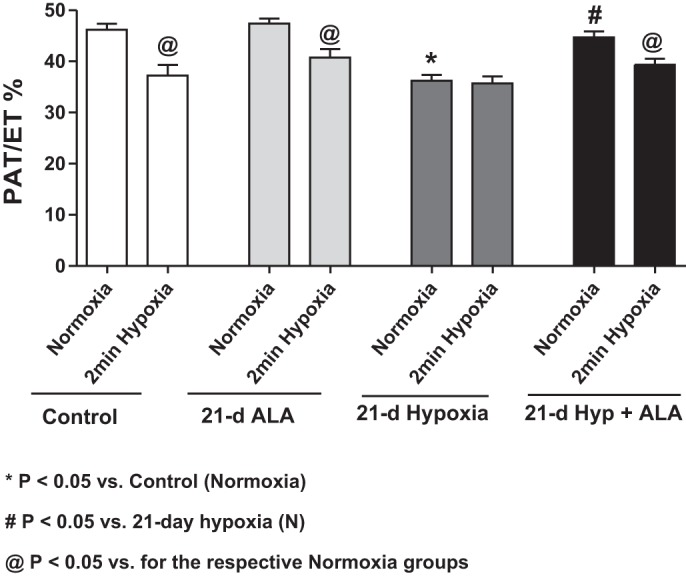Fig. 1.

Data from Doppler flow echocardiography detection of relative increases in pulmonary arterial pressure based on decreased acceleration time (PAT)-to-ejection time (ET) ratios showing that 21 days of exposure hypoxia (10% oxygen) causes pulmonary hypertension and an attenuation of the acute hypoxic pulmonary vasoconstriction response (2-min hypoxia) in a manner that is prevented by treating mice with δ-aminolevulinic acid (ALA) (50 mg·kg−1·day−1) during the exposure to chronic hypoxia. *P < 0.05 vs. control (normoxia). #P < 0.05 vs. 21-day hypoxia (N). @P < 0.05 vs. for the respective normoxia groups (n = 5 or 6).
